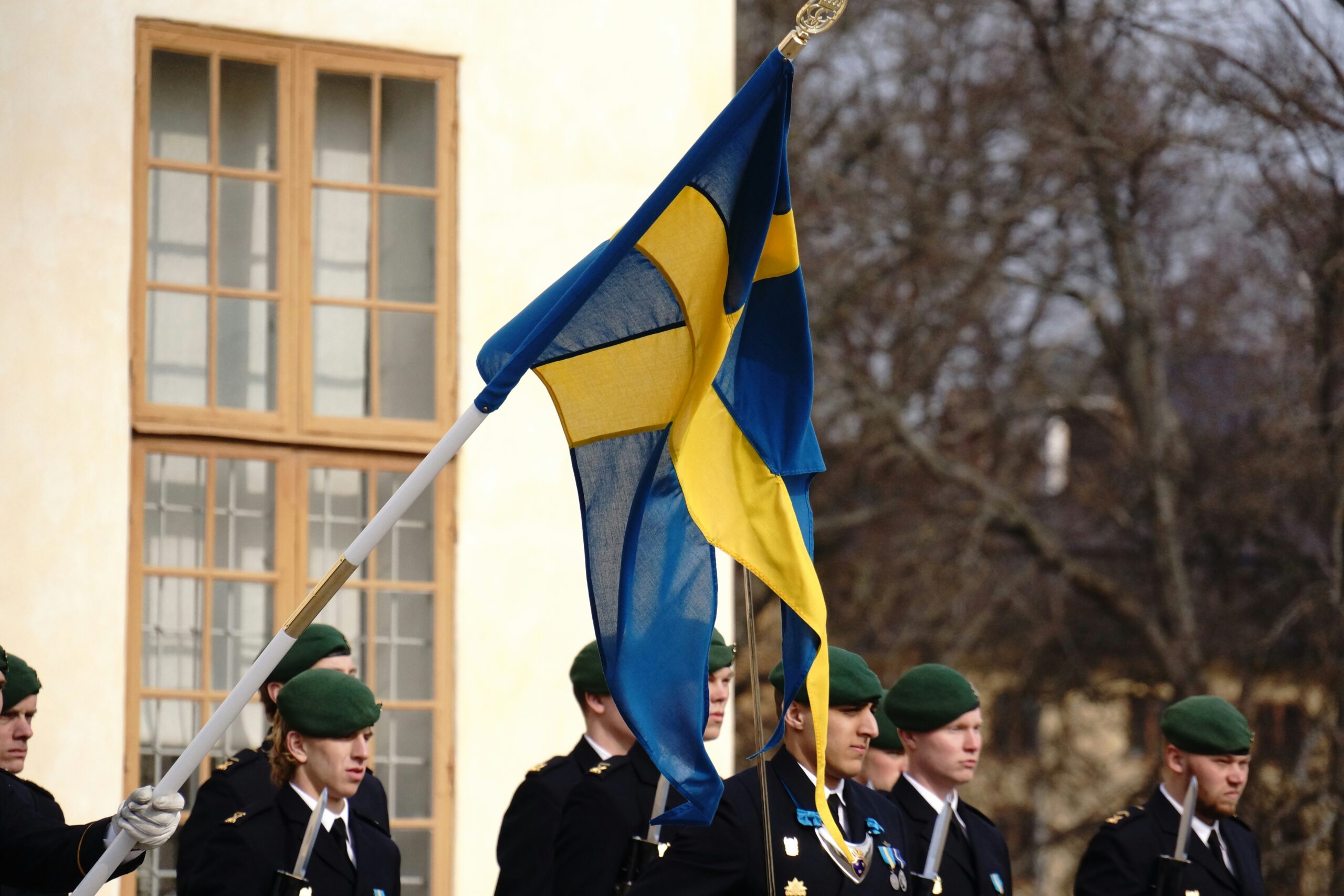Sweden will now aim to spend 3.5 percent of its gross domestic product on defense by 2032 instead of 2030. Officials confirmed the shift late Wednesday, only five days before NATO leaders gather in The Hague.
Defense Minister Pål Jonson said the new date reflects what many allies are likely to accept when they vote on a common goal next week. He emphasized that Stockholm still backs 2030 but cannot ignore the need for full consensus.
Sweden Adjusts 3.5 Percent Defense Spending Timeline Amid NATO Consensus Push
The adjustment sits inside a cross-party agreement that shapes Sweden’s 2026 defense budget. Lawmakers approved authority for a loan of up to 300 billion kronor – about $3 billion – to speed procurement programs that would otherwise stall. Sweden delays 3.5% GDP defense spending target amid broader NATO consensus talks. Finance Minister Elisabeth Svantesson framed the loan as insurance against rising threats from Russia.
Jonson’s public remarks track closely with comments from NATO Secretary General Mark Rutte, who has floated 2032 as a realistic horizon. Rutte is also pushing a two-tier plan: 3.5 percent for core military forces plus another 1.5 percent for wider security tasks such as infrastructure resilience and munitions stockpiles.
Our analysis shows the two-tier idea would lock every ally into a five-percent total share of economic output, doubling today’s formal obligation. The United States supports that level. Spain has already called it “counter-productive,” and Italy warns it cannot move that fast without new revenue streams.
Swedish Military Buildup Faces Domestic Spending and Procurement Hurdles
Inside Sweden, planners face a shorter list of hard choices. They need to raise annual defense outlays by about 1 percentage point of GDP in seven years. That equals roughly 60 billion kronor per year at current prices.
Officials hope domestic industry will absorb much of the money, but they still expect to import critical missile and radar components.
Security agencies in both Sweden and Denmark give an unvarnished reason for urgency: the region could face a major conflict inside two to five years. Senior parliamentarian Mikael Oscarsson relayed that assessment while presenting the new budget framework.
Urgent Swedish Defense Priorities: Missile Shield, Ammunition, Army Growth
Capability gaps remain obvious. Stockholm lists four priorities:
- Air- and missile-defense layers able to track and intercept cruise, ballistic, and hypersonic threats.
- A larger active-duty army with full war-reserve equipment.
- Sufficient ammunition stocks for at least 30 days of high-intensity combat.
- Long-range precision-strike options that match those held by peer adversaries.
Defense officials confirm each item will compete for the first tranche of the 300 billion-kronor loan.
Patriot surface-to-air batteries delivered in 2021 and 2022 cover initial missile defense needs. Yet planners concede the system alone cannot counter saturation raids. Oscarsson points to Israel’s four-layer model – Iron Dome, David’s Sling, Arrow 2, and Arrow 3 – as proof that varied interceptors work best together. Sweden’s recent IRIS-T SLM deal via European Sky Shield Initiative is seen as a key step toward building a multi-layered defense similar to Israel’s four-layer model.
A request for information on complementary short-range interceptors is expected this fall. Saab, Rafael, MBDA, and Kongsberg are all likely to bid. Industry sources say any contract will include options for local co-production to avoid future supply bottlenecks.
Ground-force expansion focuses on the Gotland-based mechanized brigade and two additional reserve brigades on the mainland. Each will require tracked infantry fighting vehicles, organic air-defense platoons, and modern digital command networks. The cost could reach 80 billion kronor through 2032, depending on exchange rates.
Ammunition Shortfalls Drive Factory Surge Planning
Allied artillery expenditure in Ukraine now exceeds 200,000 rounds per month. Sweden’s annual shell output is one-tenth of that. Stockholm intends to triple capacity at BAE Systems Bofors; however, suppliers still lack hardened steel and specialized explosives.
The loan agreement earmarks about 50 billion kronor for an “industrial surge package” that covers new machine tools, raw-material contracts, and training pipelines for welders and machinists. According to industry sources, government underwriting is the only way factories can justify overnight expansion.
On the long-range strike side, Sweden operates Gripen E fighters but carries a limited stock of air-launched cruise missiles.
Cruise Missile Stockpiles Lag as Sweden Explores Joint Strike Programs
Officials are studying whether to join the British-French Future Cruise/Anti-Ship Weapon program or buy U.S. JASSM-ER missiles. They will also look at land-based systems with 500-kilometer reach to deter naval incursions into the Baltic.
How will the extra spending land on the books? The Ministry of Finance plans this trajectory:
- 2026: 2.9 percent of GDP.
- 2028: 3.2 percent.
- 2030: 3.4 percent.
- 2032: 3.5 percent.
Each step assumes 2.1 percent real economic growth and steady tax receipts. Any recession would force mid-course corrections.
Treasury models show that sustained defense outlays above 3 percent of GDP push public-debt ratios from 33 percent today to about 42 percent by 2032 – still low by European standards but well above Sweden’s pre-war norm.
Defense Spending Trajectory Sparks Budget and Public-Debt Concerns
Spain’s outright rejection of the broader five-percent formula puts pressure on other southern members to pick a side. Belgium and Canada hint at sympathy, while Germany signals cautious support for at least the 3.5 percent core goal.
Italy occupies the middle ground. Foreign Minister Antonio Tajani told reporters that Rome needs “at least ten years” to touch 3.5 percent because public debt already exceeds 135 percent of GDP. Defense officials in Rome add that any new pledge must pass parliament line by line. Neighboring Norway recently outlined its New Norwegian Long-term Defence Plan, which faces similar fiscal and procurement hurdles.
Against that backdrop, Sweden’s loan mechanism offers NATO a test case for funding boosts without breaching fiscal-policy rules. European finance ministries will watch how Stockholm services the debt, especially if interest rates stay above 4 percent.
The new timeline also dovetails with Rutte’s call for a 400-percent jump in continental air-defense capacity.
NATO Five-Percent Formula Debate Intensifies Among Member States
If Stockholm can field an extra two Patriot fire units by 2028 and add a short-range layer by 2030, the Baltic sector would account for roughly five percent of the total shield NATO planners say is needed. Elsewhere in Eastern Europe, Romania Submits €10 Billion Military Upgrade Plan to boost its own defense capabilities in line with NATO’s goals.
Our analysis shows that the key risk is neither money nor technology. It is time. Systems ordered after 2026 will arrive no earlier than 2030 unless production lines gain surge authority now. That is why Sweden links its budget law to immediate factory expansion, not delayed offsets.
Senior officers underline another point: readiness beats percentage points.
Sweden Prioritizes Combat Readiness Over Budget Benchmarks
A brigade funded on paper but short of ammunition or spare parts adds little to deterrence. Stockholm will therefore phase equipment deliveries into quarterly combat-readiness reviews rather than annual budget milestones.
What happens if NATO members settle on a longer glide path, such as 2035? Swedish negotiators say they will still keep 2032. They argue that a firm national deadline protects planning certainty and signals seriousness to Moscow.
Stakeholders outside government back the move. The Confederation of Swedish Enterprise calls the defense surge a jobs program for advanced manufacturing. Universities expect new grants in materials science, radar engineering, and cybersecurity. Labor unions, usually skeptical of military projects, view the initiative as a source of stable high-skill employment.
Critics remain. Green-party members warn that doubling military emissions could derail Sweden’s 2030 climate goals. Treasury officials reply that defense accounts for under two percent of national carbon output even after the boost. They promise separate funding to decarbonize barracks and supply chains.
Stockholm Advocates NATO Metrics Focused on Combat Power, Not Spending
Looking forward, Swedish diplomats will press for annual NATO scorecards that track actual capability growth rather than headline spending. They argue that a euro invested in ammunition lines counts more than a euro diverted to higher personnel pensions.
Despite divergent national positions, allies share one reality: Europe’s security environment is harsher than at any time since the Cold War. Sweden’s timetable revision reflects that reality without pretending money alone solves it.
If NATO backs a 2032 collective deadline, member states will signal that they expect the long game – a decade of high investment and political focus, not a one-off bump. Sweden has shown its hand early. Now the rest of the alliance must decide whether to match the bet.
REFERENCE SOURCES
- https://www.naval-technology.com/analyst-comment/june-2025-nato-summit-what-to-expect-2/
- https://breakingdefense.com/2025/06/sweden-delays-3-5-gdp-defense-spending-target-predicts-2032-deadline-out-of-nato-summit/
- https://www.reuters.com/world/europe/sweden-will-reach-new-nato-spending-target-5-gdp-prime-minister-says-2025-06-13/
- https://apnews.com/article/2be81058f43461cb431747d2b964a8f0
- https://www.reuters.com/business/aerospace-defense/italy-says-it-needs-least-10-years-raise-defence-spending-2025-06-12/
- https://www.aljazeera.com/economy/2025/6/19/spain-rejects-natos-5-defence-spending-hike-as-counterproductive
- https://europeannewsroom.com/nato-summit-looms-as-europe-divided-on-record-defence-spending-hike/


